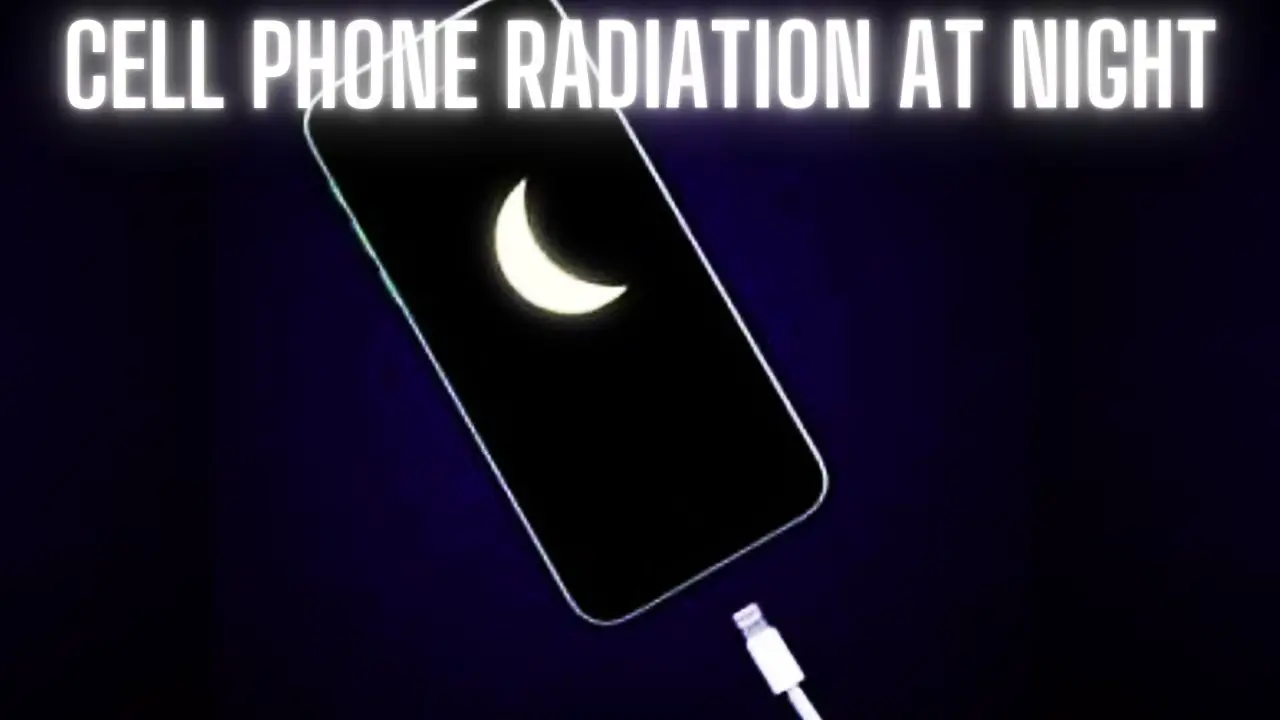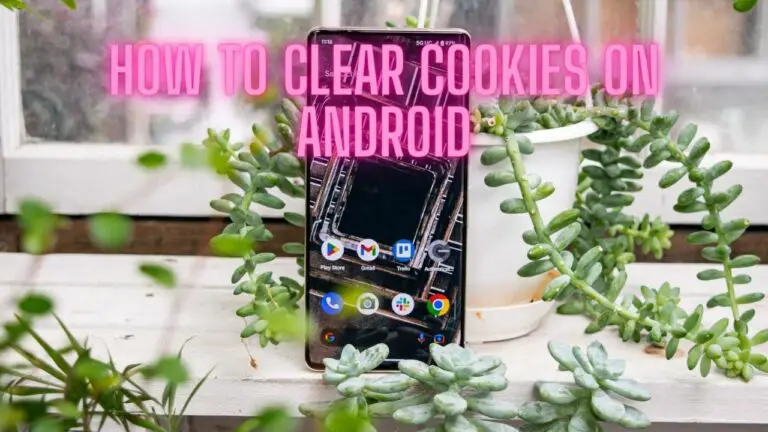Cell Phone Radiation at Night: Separating Fact from Fiction
Introduction
In today’s digital age, cell phones have become an indispensable part of our lives, serving as communication devices, entertainment hubs, and productivity tools. However, along with their many benefits, cell phones also emit electromagnetic radiation, commonly referred to as radiofrequency (RF) radiation. While the long-term health effects of cell phone radiation are still being studied, concerns have been raised about the potential risks, especially during nighttime exposure.
This guide aims to explore the topic of cell phone radiation at night, shedding light on the effects of nighttime exposure to cell phone radiation and providing practical tips for minimizing exposure and promoting better sleep hygiene. By understanding the risks associated with nighttime cell phone use and implementing effective strategies to reduce exposure, you can take proactive steps to protect your health and well-being while still enjoying the convenience of modern technology.
Understanding Cell Phone Radiation
Cell phone radiation refers to the electromagnetic radiation emitted by mobile devices such as smartphones, tablets, and cell towers. This radiation is a form of non-ionizing radiation, meaning it does not have enough energy to remove electrons from atoms or molecules (ionize) and cause cellular damage like ionizing radiation such as X-rays or gamma rays.
Cell phones emit radiofrequency (RF) radiation, which is a type of electromagnetic radiation in the microwave frequency range. This radiation is produced by the antenna of the device when it sends and receives signals to and from cell towers. The amount of radiation emitted by a cell phone depends on factors such as the device’s proximity to the user’s body, the strength of the signal, and the type of activity being performed (e.g., making a call, sending a text, browsing the internet).
While the scientific community continues to study the potential health effects of cell phone radiation, some concerns have been raised about its impact on human health, particularly with long-term and close-range exposure. Some studies suggest that prolonged exposure to RF radiation may increase the risk of certain health problems, including brain tumors, acoustic neuromas, and other types of cancer. However, the evidence remains inconclusive, and more research is needed to fully understand the risks.
It’s important to note that regulatory agencies such as the World Health Organization (WHO) and the U.S. Food and Drug Administration (FDA) have established guidelines and safety limits for exposure to RF radiation from cell phones. These guidelines are designed to protect public health and ensure that exposure levels remain within safe limits.
Overall, while cell phone radiation is a topic of ongoing research and debate, it’s essential to be aware of potential risks and take steps to minimize exposure, especially during nighttime use when the body’s natural repair and regeneration processes occur. By understanding the nature of cell phone radiation and its potential impact on health, individuals can make informed decisions about their device usage and take proactive measures to protect themselves and their loved ones.
Effects of Cell Phone Radiation on Health
- Potential Increased Cancer Risk: Some studies have suggested a possible link between long-term cell phone use and an increased risk of certain types of cancer, particularly brain tumors and acoustic neuromas. However, the evidence remains inconclusive, and further research is needed to establish a definitive causal relationship.
- Impact on Reproductive Health: There is some evidence to suggest that exposure to cell phone radiation may have adverse effects on male fertility, including reduced sperm quality and motility. Additionally, pregnant women are advised to minimize cell phone use to reduce potential risks to fetal development.
- Disruption of Sleep Patterns: Exposure to the blue light emitted by cell phone screens, particularly in the hours leading up to bedtime, can disrupt the body’s natural sleep-wake cycle and interfere with the production of melatonin, a hormone that regulates sleep. This can lead to difficulty falling asleep and poor sleep quality.
- Increased Stress and Anxiety: Constant connectivity to cell phones and the constant stream of notifications can contribute to increased stress and anxiety levels. The pressure to respond to messages and notifications at all hours can lead to feelings of overwhelm and negatively impact mental well-being.
- Potential for Electrosensitivity: Some individuals report experiencing symptoms such as headaches, dizziness, and fatigue when exposed to electromagnetic fields, including cell phone radiation. While electrosensitivity is not recognized as a medical condition by mainstream scientific organizations, some people may be more sensitive to electromagnetic radiation than others.
- Impaired Cognitive Function: There is ongoing research investigating the potential cognitive effects of long-term cell phone use, including changes in memory, attention, and other cognitive functions. While some studies have suggested possible associations, more research is needed to establish causality.
- Skin Irritation: Prolonged exposure to cell phone radiation and heat generated by the device can cause skin irritation and discomfort, particularly around the face and ears where the phone is held during calls.
- Potential Cardiovascular Effects: Some studies have suggested a possible association between cell phone radiation exposure and cardiovascular health, including changes in heart rate variability and blood pressure. However, more research is needed to confirm these findings and understand the underlying mechanisms.
Overall, while the evidence regarding the health effects of cell phone radiation remains inconclusive, it’s essential to be mindful of potential risks and take steps to minimize exposure, especially during nighttime use when the body’s natural repair processes are at work. Practicing good sleep hygiene, limiting screen time before bedtime, and using hands-free devices can help reduce exposure to cell phone radiation and promote overall well-being.
Nighttime Exposure to Cell Phone Radiation
Nighttime exposure to cell phone radiation can have several potential effects on health and sleep patterns:
- Disruption of Sleep Patterns: Exposure to the blue light emitted by cell phone screens can interfere with the body’s natural sleep-wake cycle by suppressing the production of melatonin, a hormone that regulates sleep. This can lead to difficulty falling asleep, disrupted sleep patterns, and poor sleep quality.
- Delayed Onset of Sleep: Using cell phones or other electronic devices in the hours leading up to bedtime can delay the onset of sleep by stimulating the brain and making it more difficult to wind down and relax.
- Reduced REM Sleep: Rapid Eye Movement (REM) sleep is essential for cognitive function, memory consolidation, and overall well-being. Nighttime exposure to cell phone radiation may reduce the amount of REM sleep obtained, leading to impaired cognitive function and decreased alertness during the day.
- Increased Arousal Responses: Notifications, alerts, and incoming messages from cell phones can disrupt sleep by causing arousal responses during the night. Even if you don’t fully wake up, these interruptions can fragment sleep and reduce overall sleep quality.
- Heightened Stress and Anxiety: The constant connectivity provided by cell phones can contribute to heightened stress and anxiety levels, particularly if you feel pressured to respond to messages or notifications at all hours of the night. This can negatively impact mental well-being and exacerbate sleep problems.
- Potential Health Risks: While the long-term health effects of nighttime exposure to cell phone radiation are still being studied, some research suggests that it may be associated with an increased risk of certain health problems, including cancer, reproductive issues, and cardiovascular problems.
Overall, minimizing nighttime exposure to cell phone radiation is essential for promoting healthy sleep habits and overall well-being. This can be achieved by adopting practices such as limiting screen time before bedtime, using night mode or blue light filters on devices, keeping cell phones away from the bed, and practicing good sleep hygiene. By prioritizing sleep and reducing exposure to electronic devices at night, you can support better sleep quality and overall health.
Risks of Sleeping Near Cell Phones
Sleeping near cell phones can potentially expose individuals to several risks and health concerns, including:
- Exposure to Radiofrequency (RF) Radiation: Cell phones emit RF radiation, a type of electromagnetic radiation, particularly when sending and receiving signals to and from cell towers. Prolonged and close-range exposure to RF radiation has been associated with potential health risks, including an increased risk of certain types of cancer, such as brain tumors and acoustic neuromas. While the evidence remains inconclusive, some studies suggest that sleeping near cell phones may contribute to higher levels of RF radiation exposure, especially if the device is kept close to the body for extended periods.
- Disruption of Sleep Patterns: Sleeping near cell phones can disrupt sleep patterns and impair sleep quality. The blue light emitted by cell phone screens can interfere with the body’s production of melatonin, a hormone that regulates sleep, leading to difficulty falling asleep and reduced sleep duration. Additionally, notifications, alerts, and incoming messages from cell phones can disrupt sleep by causing arousal responses during the night, leading to fragmented sleep and decreased overall sleep quality.
- Potential Impact on Reproductive Health: There is some evidence to suggest that exposure to RF radiation from cell phones may have adverse effects on reproductive health, particularly in men. Prolonged exposure to RF radiation has been associated with reduced sperm quality and motility, which can negatively impact fertility. Pregnant women are also advised to minimize exposure to cell phones and other electronic devices to reduce potential risks to fetal development.
- Increased Stress and Anxiety: Sleeping near cell phones can contribute to increased stress and anxiety levels, particularly if individuals feel pressured to respond to messages or notifications at all hours of the night. The constant connectivity provided by cell phones can lead to heightened stress levels and negatively impact mental well-being, further exacerbating sleep problems.
- Potential for Electrosensitivity: Some individuals report experiencing symptoms such as headaches, dizziness, and fatigue when exposed to electromagnetic fields, including RF radiation from cell phones. While electrosensitivity is not recognized as a medical condition by mainstream scientific organizations, some people may be more sensitive to electromagnetic radiation than others, and sleeping near cell phones may exacerbate symptoms.
Overall, while the risks of sleeping near cell phones are not fully understood, it’s essential to be mindful of potential health concerns and take steps to minimize exposure, especially during the night when the body’s natural repair processes are at work. Practicing good sleep hygiene, such as keeping cell phones away from the bed, limiting screen time before bedtime, and using airplane mode or turning off notifications can help reduce exposure to RF radiation and promote better sleep quality and overall well-being.
Studies on Cell Phone Radiation and Sleep
Several studies have investigated the potential impact of cell phone radiation on sleep patterns and sleep quality. While the findings are mixed and further research is needed, some studies have suggested a link between nighttime cell phone use and disrupted sleep. Here are a few examples of relevant studies:
- Exposure to Blue Light from Smartphones at Night and Sleep:
- A study published in the journal PLOS ONE in 2017 investigated the effects of exposure to blue light from smartphones on sleep quality and melatonin secretion in young adults. The researchers found that exposure to blue light from smartphones in the hours before bedtime significantly reduced sleep quality, delayed sleep onset, and suppressed melatonin secretion, compared to exposure to dim light. These findings suggest that nighttime exposure to blue light from smartphones can disrupt sleep patterns and impair melatonin production.
- Mobile Phone Radiation and Sleep Quality:
- A study published in the journal Sleep Science in 2019 examined the association between mobile phone radiation exposure and sleep quality among university students. The researchers found that higher levels of exposure to mobile phone radiation were associated with poorer sleep quality, including decreased sleep duration, increased sleep latency, and more frequent nighttime awakenings. These findings suggest that long-term exposure to mobile phone radiation may have adverse effects on sleep patterns and sleep quality.
- Effects of Radiofrequency Electromagnetic Fields on Sleep Quality:
- A systematic review and meta-analysis published in the journal Environmental Pollution in 2020 analyzed the effects of radiofrequency electromagnetic fields (RF-EMF) on sleep quality. The review included 11 studies with a total of 3,741 participants and found that exposure to RF-EMF from mobile phones and other wireless devices was associated with decreased sleep quality, increased sleep disturbances, and higher prevalence of insomnia symptoms. These findings provide further evidence of a potential link between nighttime exposure to cell phone radiation and disrupted sleep patterns.
- Sleep Disturbance and Mobile Phone Use:
- A study published in the journal Environmental Health and Preventive Medicine in 2019 investigated the association between mobile phone use and sleep disturbance among adolescents. The researchers found that heavy mobile phone users were more likely to experience sleep disturbance, including difficulty falling asleep, frequent nighttime awakenings, and early morning awakenings, compared to light users. These findings suggest that excessive mobile phone use, particularly at night, may contribute to sleep problems among adolescents.
While these studies provide valuable insights into the potential effects of cell phone radiation on sleep, it’s important to note that more research is needed to fully understand the relationship between nighttime cell phone use and sleep quality. Factors such as individual susceptibility, duration of exposure, and the specific characteristics of the electromagnetic radiation emitted by cell phones may also play a role in determining the impact on sleep patterns.
Tips for Reducing Exposure to Cell Phone Radiation at Night
Reducing exposure to cell phone radiation at night is crucial for promoting better sleep quality and overall health. Here are some tips to help minimize nighttime exposure to cell phone radiation:
- Use Airplane Mode:
- Switch your cell phone to airplane mode before going to bed to disable wireless communication functions, including cellular, Wi-Fi, and Bluetooth connections. This prevents the device from emitting radiofrequency (RF) radiation while you sleep.
- Keep Cell Phones Away from the Bed:
- Avoid placing cell phones directly next to or under your pillow or mattress while sleeping. Keep your phone at least a few feet away from your body to reduce exposure to RF radiation.
- Turn Off Notifications:
- Disable notifications, alerts, and incoming calls during nighttime hours to minimize disturbances and reduce the temptation to check your phone. Consider enabling “Do Not Disturb” mode to silence notifications while you sleep.
- Use a Bedside Alarm Clock:
- Instead of relying on your cell phone as an alarm clock, use a traditional bedside alarm clock or a smart home device with alarm capabilities. This eliminates the need to keep your phone nearby while you sleep.
- Enable Night Mode or Blue Light Filters:
- Activate night mode or use blue light filter apps on your cell phone to reduce exposure to blue light, which can interfere with melatonin production and disrupt sleep patterns. These features adjust the screen color temperature to warmer tones that are less stimulating to the brain.
- Limit Screen Time Before Bed:
- Minimize screen time in the hours leading up to bedtime to reduce exposure to blue light and prevent overstimulation of the brain. Engage in relaxing activities such as reading a book, practicing meditation, or listening to calming music instead.
- Use Speakerphone or Hands-Free Mode:
- If you need to make or receive calls before bedtime, use speakerphone mode or a hands-free device to keep your cell phone away from your head and body. This reduces direct exposure to RF radiation while maintaining communication convenience.
- Consider EMF Shielding Products:
- Explore the use of EMF shielding products such as phone cases, pouches, or radiation-blocking fabric to reduce RF radiation exposure from your cell phone. These products create a barrier between the device and your body, minimizing direct contact with radiation.
- Create a Technology-Free Bedroom Environment:
- Establish a technology-free zone in your bedroom by removing electronic devices such as TVs, computers, and gaming consoles. This promotes a more peaceful sleep environment and reduces overall exposure to electromagnetic radiation.
- Practice Good Sleep Hygiene:
- Adopt healthy sleep habits, such as maintaining a consistent sleep schedule, creating a relaxing bedtime routine, and optimizing your sleep environment for comfort and tranquility. Prioritize sleep as an essential component of your overall health and well-being.
By implementing these tips, you can minimize nighttime exposure to cell phone radiation and create a healthier sleep environment conducive to restorative and rejuvenating sleep. Prioritize sleep hygiene and take proactive steps to protect yourself and your loved ones from the potential risks associated with excessive cell phone use at night.
Using Airplane Mode
Using Airplane Mode is a simple and effective way to reduce exposure to cell phone radiation, especially at night. Here’s how to enable Airplane Mode on most smartphones:
- iPhone (iOS):
- Swipe down from the top-right corner of the screen to open the Control Center.
- Look for the airplane icon (it resembles an airplane) and tap on it to enable Airplane Mode. Alternatively, go to Settings > Airplane Mode and toggle the switch to turn it on.
- Android:
- Swipe down from the top of the screen to open the Quick Settings menu.
- Look for the Airplane Mode icon (it may vary depending on your device and Android version) and tap on it to enable Airplane Mode. Alternatively, go to Settings > Network & internet > Airplane Mode and toggle the switch to turn it on.
- Other Devices:
- For other devices, such as Windows phones or feature phones, look for the Airplane Mode option in the Settings menu. It may be located under the Network or Wireless settings.
Once Airplane Mode is enabled, your device will disable all wireless communication functions, including cellular, Wi-Fi, and Bluetooth connections. This prevents the device from emitting radiofrequency (RF) radiation while still allowing you to use other functions such as the alarm clock, camera, or offline apps.
It’s important to note that while in Airplane Mode, you won’t be able to send or receive calls, messages, or access the internet unless you manually re-enable specific functions like Wi-Fi or Bluetooth. However, for nighttime use when communication isn’t necessary, Airplane Mode provides a convenient way to reduce exposure to cell phone radiation and promote better sleep hygiene.
Keeping Devices Away from the Bed
Keeping electronic devices, including cell phones, away from the bed is essential for reducing exposure to radiation and promoting better sleep hygiene. Here are some tips for keeping devices away from the bed:
- Designate a Charging Station:
- Set up a designated charging station for electronic devices in an area away from the bed, such as a desk or nightstand. This encourages you to leave your devices there while charging instead of keeping them close to the bed.
- Use Alarm Clock Alternatives:
- Instead of relying on your cell phone as an alarm clock, consider using a traditional alarm clock or a smart home device with alarm capabilities. Keep these devices on your nightstand or across the room from the bed to minimize exposure to radiation while sleeping.
- Establish a Technology-Free Zone:
- Create a technology-free zone in your bedroom by removing electronic devices such as TVs, computers, and gaming consoles. This helps create a peaceful sleep environment and reduces temptation to use electronic devices in bed.
- Set Boundaries with Devices:
- Establish boundaries with electronic devices by setting specific times when they are off-limits in the bedroom, such as one hour before bedtime. This allows you to unwind and relax without the distractions of screens and notifications.
- Use Sleep Tracking Devices Sparingly:
- If you use sleep tracking devices or apps, place them on a nearby surface instead of directly on the bed. This minimizes exposure to radiation while still allowing you to monitor your sleep patterns and habits.
- Implement a No-Screen Time Rule:
- Implement a no-screen time rule before bedtime to reduce exposure to blue light and electronic stimuli that can interfere with sleep. Engage in relaxing activities such as reading a book or practicing meditation instead.
- Create a Relaxing Sleep Environment:
- Focus on creating a relaxing sleep environment conducive to restorative sleep by keeping the bedroom free of distractions and electronic devices. Use soft lighting, comfortable bedding, and calming scents to promote relaxation and sleep.
By keeping electronic devices away from the bed and establishing boundaries with technology use in the bedroom, you can reduce radiation exposure, minimize distractions, and improve sleep quality. Prioritize creating a peaceful sleep environment that promotes restful and rejuvenating sleep.
Using EMF Shielding Products
EMF (Electromagnetic Field) shielding products are designed to reduce exposure to electromagnetic radiation emitted by electronic devices, including cell phones. While the effectiveness of these products may vary, here are some common types of EMF shielding products and how they can be used:
- Phone Cases:
- EMF shielding phone cases are designed to reduce the amount of radiation emitted by cell phones and block electromagnetic fields from reaching the body. These cases typically contain materials such as metal mesh or special fabrics that absorb or deflect electromagnetic radiation.
- Pouches and Holsters:
- EMF shielding pouches or holsters are designed to provide a protective barrier between the body and the cell phone when carrying it on your person. These pouches are made from materials that block or absorb electromagnetic radiation, reducing exposure to the user.
- Radiation-Blocking Fabric:
- Some EMF shielding products are made from specialized fabrics that contain conductive materials, such as silver or copper threads, which can block or absorb electromagnetic radiation. These fabrics can be used to make clothing, bedding, curtains, and other items to reduce exposure to radiation in various environments.
- Radiation-Blocking Stickers or Chips:
- EMF shielding stickers or chips are small adhesive devices that can be applied to cell phones or other electronic devices to reduce radiation exposure. These products typically contain materials that absorb or deflect electromagnetic radiation, providing a protective barrier between the device and the user.
- Electromagnetic Field Meters:
- While not strictly EMF shielding products, electromagnetic field meters can be used to measure and monitor levels of electromagnetic radiation emitted by electronic devices. These meters can help identify areas of high radiation exposure and inform decisions about EMF shielding and mitigation strategies.
It’s important to note that the effectiveness of EMF shielding products may vary, and scientific evidence supporting their efficacy in reducing health risks is limited. Additionally, the Federal Communications Commission (FCC) sets limits on the amount of electromagnetic radiation that electronic devices can emit, and cell phones are required to comply with these regulations to ensure they are safe for use.
While EMF shielding products may provide some degree of protection against electromagnetic radiation, other strategies such as limiting cell phone use, keeping devices away from the body, and practicing good sleep hygiene may also be effective in reducing exposure to radiation and promoting overall health and well-being.
Alternative Alarm Clock Options
Alternative alarm clock options provide a way to wake up in the morning without relying on a cell phone or electronic device. Here are some alternative alarm clock options to consider:
- Traditional Alarm Clocks:
- Traditional alarm clocks are standalone devices designed specifically for waking you up at a set time. They typically feature analog or digital displays, snooze buttons, and adjustable alarm settings. Choose from a variety of styles, including bedside clocks, projection clocks, and travel clocks.
- Sunrise Alarm Clocks:
- Sunrise alarm clocks simulate the natural sunrise by gradually increasing light intensity over a period of time before your scheduled wake-up time. This gentle wake-up method can help regulate your circadian rhythm and promote a more natural waking experience. Some models also include nature sounds or FM radio for added customization.
- Smart Home Devices:
- Smart home devices such as Amazon Echo (Alexa) or Google Nest Hub can serve as alternative alarm clock options. These devices feature built-in alarm functions that allow you to set alarms using voice commands or through a companion app. Additionally, you can customize alarm tones and set recurring alarms for consistent wake-up times.
- Mechanical or Wind-Up Alarm Clocks:
- Mechanical or wind-up alarm clocks are powered by mechanical movements rather than electricity, making them a reliable and environmentally-friendly option. These clocks require manual winding to set the alarm and typically feature classic designs with bells or chimes to wake you up.
- Projection Alarm Clocks:
- Projection alarm clocks display the time and alarm status on the ceiling or wall of your bedroom using a built-in projector. This allows you to easily view the time without having to turn your head or reach for a bedside clock. Some models also feature adjustable projection angles and focus settings for optimal visibility.
- Vibrating Alarm Clocks:
- Vibrating alarm clocks are designed for individuals who are hard of hearing or prefer a tactile alarm option. These clocks feature a vibrating pad or pillow attachment that vibrates to wake you up at the set time. They can be placed under your pillow or mattress for discreet wake-up alerts.
- Natural Wake-Up Light Devices:
- Natural wake-up light devices simulate the sunrise and sunset using a combination of light and sound therapy. These devices gradually increase light intensity in the morning to mimic the natural dawn, helping you wake up feeling refreshed and energized. Some models also include features such as aromatherapy and white noise options for added relaxation.
By exploring alternative alarm clock options, you can find a solution that best suits your preferences and lifestyle while minimizing reliance on cell phones and electronic devices in the bedroom. Prioritize creating a peaceful and technology-free sleep environment to promote better sleep quality and overall well-being.
Importance of Good Sleep Hygiene
Good sleep hygiene refers to a set of practices and habits that promote healthy and restful sleep. It plays a crucial role in overall health and well-being, as quality sleep is essential for physical, mental, and emotional functioning. Here are some reasons why good sleep hygiene is important:
- Enhanced Physical Health: Adequate and restorative sleep is vital for physical health and well-being. It supports immune function, metabolism, hormone regulation, and cardiovascular health. Good sleep hygiene can help reduce the risk of obesity, diabetes, heart disease, and other chronic health conditions.
- Improved Mental Health: Quality sleep is closely linked to mental health and cognitive function. Proper rest allows the brain to process information, consolidate memories, and regulate emotions effectively. Good sleep hygiene can help reduce the risk of mood disorders, such as depression and anxiety, and improve overall cognitive performance and mental clarity.
- Increased Energy and Productivity: Quality sleep provides the energy and alertness needed to tackle daily tasks and challenges. Good sleep hygiene can help improve concentration, focus, and productivity throughout the day, leading to better performance at work, school, or other activities.
- Better Stress Management: Adequate sleep plays a crucial role in stress management and resilience. Quality sleep helps regulate stress hormones and promotes relaxation, making it easier to cope with daily stressors and challenges. Good sleep hygiene can help reduce feelings of irritability, frustration, and overwhelm.
- Enhanced Immune Function: Sleep plays a critical role in supporting immune function and defending the body against infections and illnesses. Quality sleep helps regulate immune responses and promote the production of cytokines, which are essential for fighting off pathogens and maintaining overall health. Good sleep hygiene can help strengthen the immune system and reduce the risk of illness.
- Optimized Hormone Regulation: Sleep is closely linked to hormone regulation, including hormones that control appetite, metabolism, and growth. Quality sleep helps regulate hormone levels, leading to better appetite control, weight management, and growth and development, especially in children and adolescents.
- Reduced Risk of Accidents and Injuries: Fatigue and sleep deprivation can impair judgment, reaction time, and coordination, increasing the risk of accidents and injuries. Good sleep hygiene can help reduce the likelihood of accidents on the road, at work, or during other daily activities by ensuring that you are well-rested and alert.
Overall, good sleep hygiene is essential for maintaining overall health, well-being, and quality of life. By prioritizing healthy sleep habits and creating a conducive sleep environment, you can enjoy the numerous benefits of restorative and rejuvenating sleep.
FAQS
What is cell phone radiation, and is it dangerous at night?
Cell phone radiation refers to the non-ionizing electromagnetic radiation emitted by cell phones. It is primarily in the form of radiofrequency (RF) radiation. While there is ongoing debate and research about the potential health effects of prolonged cell phone use, current scientific consensus suggests that the radiation levels from cell phones, even at night, are generally considered safe for most people.
Can keeping my cell phone near me at night pose health risks?
The potential health risks of keeping your cell phone near you at night are a subject of debate. Some concerns have been raised about possible links between long-term cell phone use and health issues like brain tumors. However, the evidence remains inconclusive, and most studies have not found clear associations. To reduce any potential risk, it’s advisable to keep your phone at a distance from your head or consider using airplane mode at night to turn off wireless functions.
How can I minimize my exposure to cell phone radiation at night?
You can minimize your exposure to cell phone radiation at night by following these tips:
- Place your phone at a distance from your head, such as on a nightstand, rather than under your pillow or right beside you.
- Activate airplane mode at night to disable most wireless functions, including cellular, Wi-Fi, and Bluetooth.
- Consider using the phone’s “Do Not Disturb” mode to silence notifications and calls while you sleep.
Are there any health risks associated with cell phone radiation during the day?
The potential health risks associated with cell phone radiation during the day are similar to those at night. Concerns mainly revolve around long-term exposure to RF radiation. While some studies have suggested possible links to health issues, the evidence remains inconclusive, and more research is needed to establish definitive connections.
Are there products that can shield or reduce cell phone radiation exposure?
Some products claim to reduce RF radiation exposure from cell phones, such as cases or stickers with built-in shielding materials. However, the effectiveness of these products is a subject of debate, and their claims may not always be scientifically substantiated. It’s important to approach such products with caution and rely on well-established safety guidelines for cell phone usage.
Should I be concerned about my child’s exposure to cell phone radiation at night?
Children may be more sensitive to potential health risks associated with radiation exposure. It’s advisable to limit their cell phone usage, especially at night. You can apply the same precautions mentioned earlier, such as keeping the phone at a distance and using airplane mode, to reduce their exposure.
What do health organizations like the WHO say about cell phone radiation?
Health organizations like the World Health Organization (WHO) classify RF radiation from cell phones as “possibly carcinogenic to humans” (Group 2B). This classification indicates that there is limited evidence suggesting a possible link to cancer, but it falls short of establishing a clear causal relationship. The consensus is that more research is needed to understand any potential risks fully. In the meantime, organizations like the WHO recommend adopting precautionary measures to reduce exposure.
Conclusion
While the potential health effects of cell phone radiation are a subject of ongoing research and debate, the consensus among health organizations, including the World Health Organization (WHO), is that there is no conclusive evidence to establish a clear link between cell phone radiation and adverse health outcomes. Nonetheless, it’s essential to exercise caution, especially at night, by keeping your phone at a safe distance or using airplane mode if you have concerns about exposure. The best approach is to stay informed about emerging research in this field and make informed choices regarding your cell phone usage.







